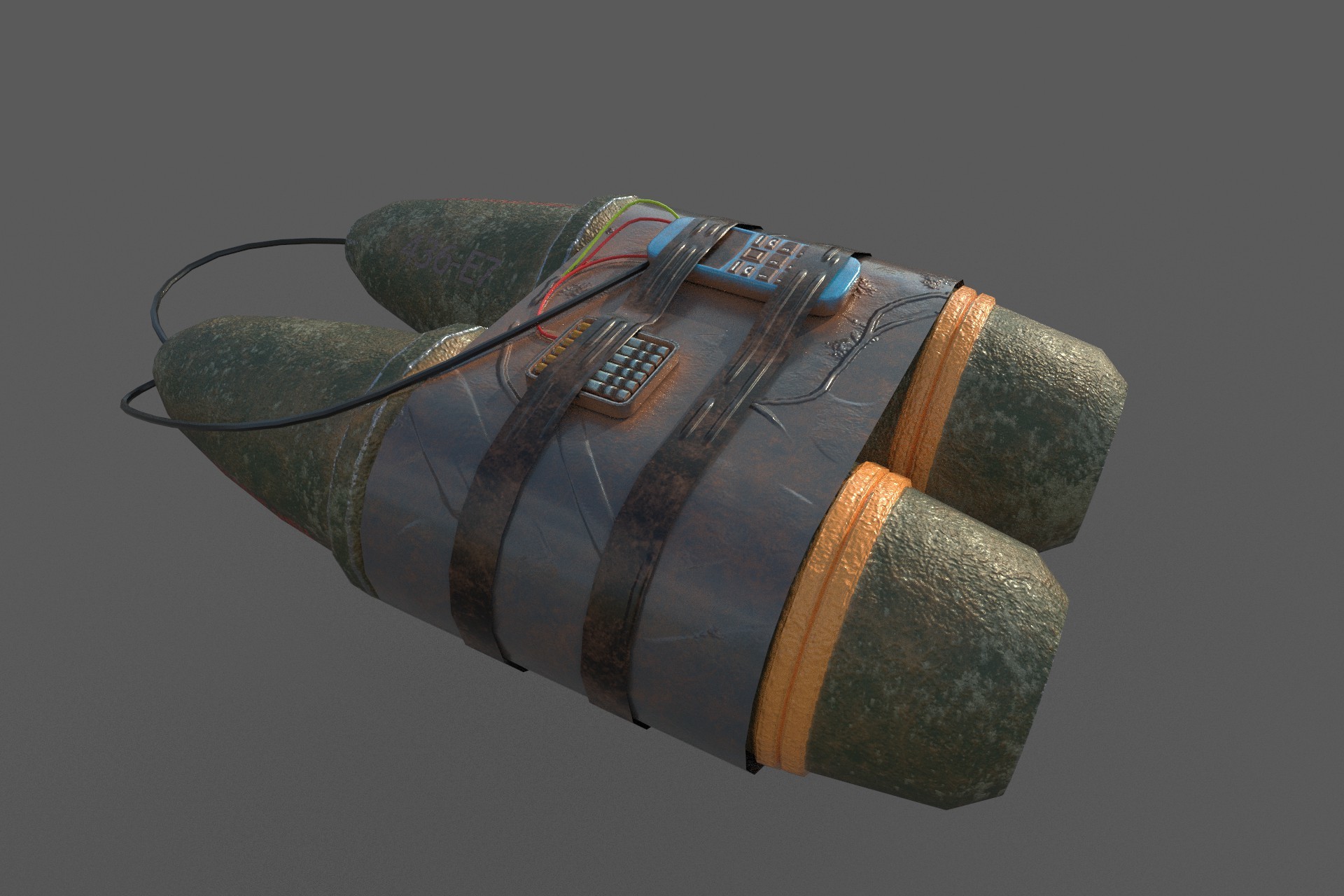
Improvised Explosive Devices (IEDs) have become one of the most significant threats in modern warfare and terrorism. These deadly weapons, often made from everyday items and easily concealed, have resulted in countless casualties and immense destruction. Understanding the nature and characteristics of IEDs is crucial for law enforcement agencies, military personnel, and anyone concerned about national security.
In this article, we will delve into 14 eye-opening facts about improvised explosive devices. From their history and construction to their devastating impact and countermeasures, we will explore the world of IEDs and shed light on the intricate details that make them such a formidable weapon. Whether you’re interested in the technical aspects or simply seeking to expand your knowledge, this article will provide you with a comprehensive understanding of IEDs and the challenges they pose in today’s world.
Key Takeaways:
- Improvised Explosive Devices (IEDs) are homemade bombs used by non-state actors to cause harm. They come in different types and can be triggered in various ways, posing a serious threat to both military and civilian populations.
- Efforts to combat IEDs include education, international collaboration, and evolving technology. These bombs not only cause physical harm but also create fear and disrupt post-conflict reconciliation, making it crucial to continue finding ways to counter this ongoing threat.
What is an Improvised Explosive Device?
An Improvised Explosive Device (IED) refers to a homemade explosive device that is created and used by non-state actors, such as insurgents or terrorists. It is designed to cause destruction and harm to individuals, vehicles, or structures.
Types of IEDs
There are various types of IEDs, including vehicle-borne IEDs (VBIEDs), suicide bombers, roadside bombs, and booby traps. These devices are often concealed and camouflaged to increase their effectiveness and surprise the intended targets.
Common Components
The components used in IEDs can vary, but commonly include a power source, such as a battery or wiring, a main charge, often made from explosives or flammable materials, and a triggering mechanism to initiate the explosion.
Triggers and Detonation Methods
IEDs can be triggered using various methods, including pressure switches, tripwires, remote control devices, or command wires. Detonation can be achieved through timers, remote control devices, or even by using cell phones.
Targets of IEDs
IEDs can be indiscriminate or targeted towards specific individuals, military personnel, or civilian populations. They have been used in conflicts, acts of terrorism, and acts of insurgency around the world.
Impact of IEDs
IEDs have had a devastating impact on both military and civilian populations. They have caused numerous casualties, destruction of infrastructure, and psychological trauma to those affected by the attacks.
Counter-IED Measures
Counter-IED measures are implemented to detect, neutralize, and mitigate the threat posed by IEDs. These measures include intelligence gathering, bomb disposal units, vehicle screening, and the use of specialized equipment to detect and disrupt IEDs.
Evolving Technology
The technology used in IEDs is constantly evolving, making it challenging for security forces to effectively detect and counter them. Non-state actors often adapt their tactics and techniques to overcome countermeasures.
International Efforts
There have been international efforts to combat the use of IEDs and provide assistance to affected countries. Organizations like the United Nations and NATO have supported initiatives aimed at identifying and dismantling IED networks.
Role of Education and Awareness
Education and awareness play a crucial role in preventing and mitigating the threat of IEDs. By educating communities, security forces, and individuals about the dangers posed by these devices, it becomes easier to identify and report suspicious activities.
Psychological Warfare
IEDs not only cause physical harm but also serve as a tool for psychological warfare. The fear and uncertainty generated by the use of IEDs can have a significant impact on the morale and mental well-being of affected individuals and communities.
IEDs in Guerilla Warfare
IEDs have become a prominent weapon in guerilla warfare tactics. Non-state actors, with limited resources, use IEDs to inflict damage on their adversaries and disrupt their operations.
Impacts on Post-Conflict Reconciliation
IEDs pose challenges to post-conflict reconciliation efforts as they hinder the restoration of peace and stability. The presence of IEDs can prolong the return of displaced populations and impede reconstruction efforts.
Continued Threat
Despite efforts to combat the use of IEDs, they continue to pose a significant threat. Non-state actors adapt and innovate, making it essential for ongoing research, development, and international collaboration to counter this threat effectively.
Conclusion
Improvised Explosive Devices (IEDs) are complex and dangerous weapons that pose a serious threat to national security and civilian populations around the world. In this article, we have explored 14 facts about IEDs, shedding light on their devastating impact and the challenges they present.
From their low cost and easy accessibility to their versatility and ability to cause widespread damage, IEDs have become a weapon of choice for insurgent groups and terrorists. Understanding the nature of these devices and the tactics employed by those who use them is crucial in developing effective countermeasures to mitigate their destructive potential.
As technology evolves, so do the methods of constructing and deploying IEDs. It is essential for security forces and law enforcement agencies to stay one step ahead, constantly adapting their strategies and enhancing their capabilities to detect and neutralize these deadly weapons.
By continually raising awareness and investing in research and development, we can equip ourselves with the knowledge and tools needed to combat the threat of improvised explosive devices and protect innocent lives.
FAQs
Q: What is an improvised explosive device (IED)?
A: An improvised explosive device (IED) is a homemade explosive device that is constructed and deployed with the intention to cause harm or destruction.
Q: How are IEDs constructed?
A: IEDs can be constructed using a variety of materials including commercial or military explosives, shrapnel, and triggering mechanisms such as timers or remote control devices.
Q: Where are IEDs commonly used?
A: IEDs are commonly used in asymmetric warfare, insurgencies, and acts of terrorism. They can be deployed in urban areas, checkpoints, vehicles, or hidden along roadsides.
Q: What are the dangers of IEDs?
A: IEDs pose a significant threat due to their ability to cause casualties, damage infrastructure, and disrupt social and economic stability. They are difficult to detect and can be triggered remotely, making them a considerable challenge for security forces.
Q: How can we protect against IED attacks?
A: Protection against IED attacks involves a multi-faceted approach, including intelligence gathering, counter-IED training, enhanced security measures, and public awareness campaigns. Collaboration between law enforcement agencies and communities is crucial in detecting and preventing these attacks.
Q: Are there specific countermeasures for IEDs?
A: Yes, countermeasures for IEDs include technological advancements in explosive detection, bomb disposal units, military patrols, and training programs to educate personnel on recognizing and responding to potential threats.
Q: How can individuals spot potential IEDs?
A: Individuals can look out for suspicious behavior, unattended packages or bags in public spaces, and unusual objects or wires. It is essential to report any suspicious activity to the authorities.
Q: What initiatives are being taken to combat the threat of IEDs?
A: Various international organizations and government agencies are working together to develop and share intelligence, improve detection technologies, and train security forces to counter the threat of IEDs.
Q: Can IED attacks be prevented entirely?
A: While it is challenging to completely prevent IED attacks, proactive measures can significantly reduce their frequency and impact through intelligence-driven operations, improved security measures, and community involvement.
Q: Are there any legal measures against IEDs?
A: Yes, countries have laws and regulations that criminalize the possession, manufacture, and use of IEDs. Law enforcement agencies work closely with legal systems to prosecute individuals involved in IED-related activities.
Q: How have advancements in technology affected IED tactics?
A: Advancements in technology have impacted IED tactics by providing new means of triggering and concealing explosive devices. These advancements necessitate constant innovation in countermeasures to stay ahead of the evolving threat.
Q: How can the public contribute to combating the threat of IEDs?
A: The public can contribute to combating the threat of IEDs by reporting any suspicious activity, being vigilant in public spaces, and supporting awareness campaigns that educate communities about the dangers of IEDs.
Q: Is there a global effort to combat the use of IEDs?
A: Yes, there is a global effort involving collaboration between nations, intelligence agencies, and law enforcement organizations to share information, coordinate actions, and develop strategies to counter the use of IEDs.
Q: How can I learn more about IEDs and their countermeasures?
A: To learn more about IEDs and their countermeasures, you can consult government publications, security experts, and educational resources that provide in-depth knowledge on this subject.
After learning about the deadly impact of IEDs, you may be interested in exploring more related topics. For those fascinated by how these devices are depicted in popular culture, our article on the critically acclaimed film "The Hurt Locker" offers an in-depth look at its portrayal of bomb disposal experts. Gain a deeper understanding of the challenges faced by those who risk their lives to keep others safe from the threat of IEDs.
Was this page helpful?
Our commitment to delivering trustworthy and engaging content is at the heart of what we do. Each fact on our site is contributed by real users like you, bringing a wealth of diverse insights and information. To ensure the highest standards of accuracy and reliability, our dedicated editors meticulously review each submission. This process guarantees that the facts we share are not only fascinating but also credible. Trust in our commitment to quality and authenticity as you explore and learn with us.


